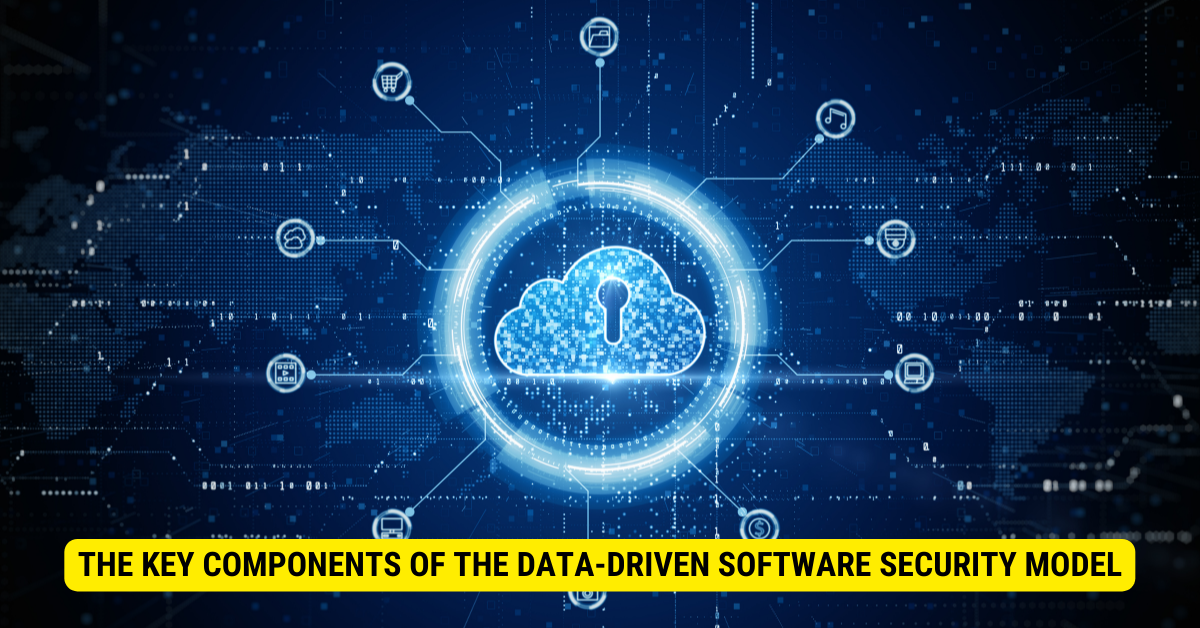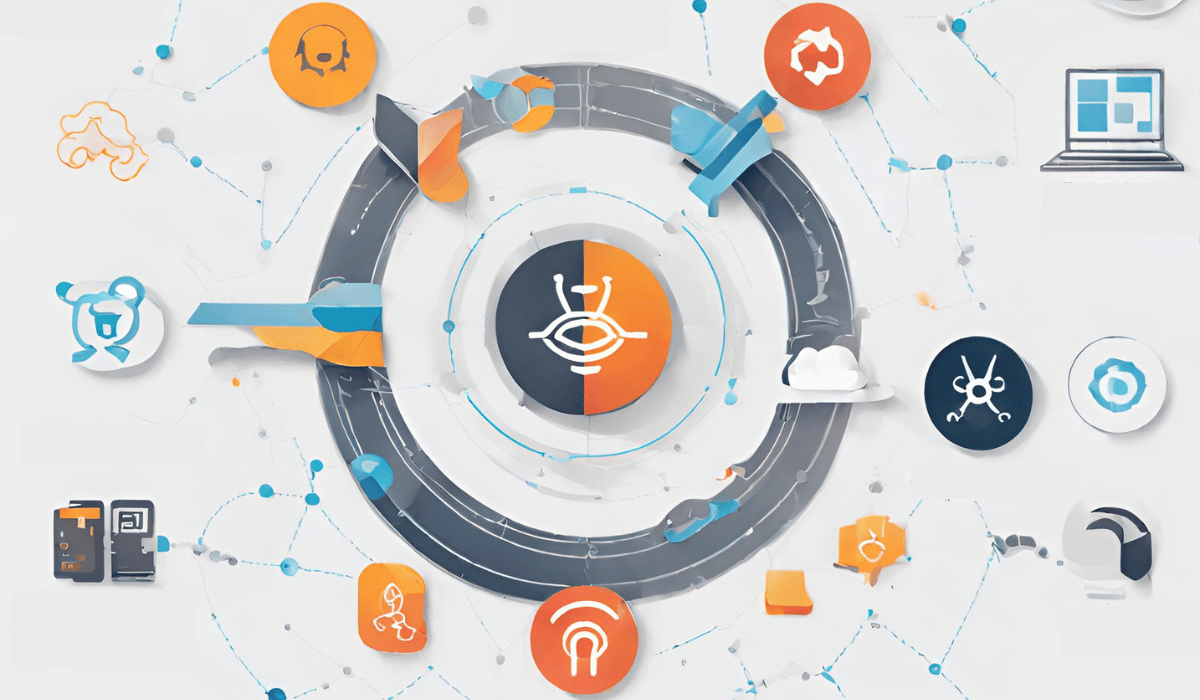The Data-Driven Software Security Model is an advanced cybersecurity framework that uses data analytics, machine learning, and artificial intelligence to fortify software applications against cyber threats by investigating vast amounts of data and identifying potential vulnerabilities proactively.
In the rapidly evolving landscape of cyberspace, ensuring robust security measures for software applications is of utmost importance. The growth of sophisticated cyber threats and attacks demands a proactive approach toward safeguarding sensitive information and upholding the integrity of software systems. As a leading expert in the field, we present a comprehensive “Data-Driven Software Security Model” guide that provides valuable insights and helps fortify your software against potential vulnerabilities. We will delve deep into the details of the data-driven security approach and how it can significantly enhance your organization’s cyber resilience.
Understanding the Data-Driven Software Security Model
The Data-Driven Software Security Model is an advanced framework that leverages data analytics, machine learning, and artificial intelligence to bolster a software application’s defenses. Instead of relying solely on traditional rule-based security solutions, this model analyzes vast data to identify potential threats, predict future attacks, and adapt to emerging risks. The system can swiftly respond to evolving cyber threats by continuously learning from real-time data, making it a cutting-edge solution for modern-day security challenges.
The Key Components of the Data-Driven Software Security Model

-
Big Data Analytics for Threat Detection
In the era of big data, security professionals are inundated with massive amounts of information generated by their systems. The data-driven security model harnesses the power of big data analytics to process, correlate, and analyze this vast volume of data. By identifying patterns, anomalies, and potential threats, security teams can gain valuable insights that aid in preemptive security measures.
-
Machine Learning Algorithms

These algorithms play a critical role in the data-driven security model. These algorithms are trained to recognize normal behavior patterns and rapidly detect deviations from the established norms. Threat detection accuracy improves over time as they continuously learn from new data, leading to a proactive security approach.
-
Real-time Threat Intelligence
The data-driven security model relies on real-time threat intelligence feeds to stay updated with the latest cyber threats. This constant stream of information allows the system to respond swiftly to emerging risks, providing your software application with a dynamic and resilient security posture.
-
Automated Incident Response
Incorporating automation into the incident response process is a hallmark of the data-driven security model. When potential threats are detected, the system can autonomously trigger a series of predefined responses, mitigating the influence of the attack and minimizing downtime.
Advantages of Implementing the Data-Driven Software Security Model
- Proactive Security Measures
Traditional security approaches often focus on reacting to incidents after they occur. In contrast, the data-driven security model empowers organizations to identify and address probable threats before materializing proactively.
- Enhanced Accuracy and Efficacy
The data-driven security model boasts superior accuracy and efficacy in detecting and mitigating cyber threats thanks to machine learning algorithms and real-time threat intelligence. This significantly reduces false positives, allowing security teams to concentrate on genuine threats.
- Adaptive to Emerging Threats
As cyber threats evolve rapidly, having a security model that can adapt and learn from new data is crucial. The data-driven approach ensures that your software security evolves alongside emerging threats, maintaining a high level of protection at all times.
- Cost-Effective Security Solutions
Detecting and preventing cyber threats in real-time results in substantial cost savings. Organizations can avoid the financial repercussions of data breaches, system downtime, and reputational damage by thwarting potential attacks before they escalate.
Implementing the Data-Driven Software Security Model: A Step-by-Step Guide
Step 1: Assessing Existing Security Measures
Before embarking on the implementation journey, a comprehensive assessment of your organization’s security infrastructure is essential. Recognize strengths, weaknesses, and areas of improvement to tailor the data-driven security model accordingly.
Step 2: Defining Security Objectives
Clearly outline the security objectives you want to achieve with the data-driven model. Whether protecting customer data, safeguarding intellectual property, or ensuring compliance with industry standards, having well-defined objectives will guide your implementation strategy.
Step 3: Selecting the Right Tools and Technologies
Choosing the appropriate big data analytics and machine learning tools is crucial for the success of your data-driven security model. Collaborate with security experts and data scientists to identify tools that align with your organization’s needs.
Step 4: Data Collection and Integration
Collect relevant data from various sources within your organization, including network logs, application logs, and user behavior data. Integrate this data into your chosen analytics platform to facilitate comprehensive threat analysis.
Step 5: Machine Learning Model Training
Train your machine learning algorithms using historical data to create a baseline of normal system behavior. This process is fundamental to ensure accurate anomaly detection and predictive capabilities.
Step 6: Real-Time Monitoring and Response Implementation
Set up real-time monitoring to continuously analyze incoming data for potential threats. Configure automated response mechanisms to handle detected threats promptly.
Step 7: Regular Testing and Optimization
Perform regular testing and optimization of your data-driven security model. Stay up-to-date with the newest threat intelligence and fine-tune your system for optimal performance.
Specific Tools and Technologies for Data-Driven Software Security

Several tools and technologies are recommended to implement the data-driven software security model effectively. Some of the key ones include:
- Big Data Platforms: Apache Hadoop, Apache Spark, and Elasticsearch are popular big data platforms that can handle the massive amounts of data required for effective threat analysis.
- Machine Learning Libraries: Scikit-learn, TensorFlow, and PyTorch are widely used machine learning libraries offering various algorithms for training and deploying machine learning models.
- Security Information and Event Management (SIEM) Solutions: SIEM solutions like Splunk, IBM QRadar, and ArcSight are crucial for centralizing and analyzing security event data.
- Threat Intelligence Feeds: Subscribing to reputable threat intelligence feeds, such as those provided by IBM X-Force and FireEye, enables real-time awareness of the latest cyber threats.
Implementation Timeline of the Data-Driven Software Security Model
The time required to implement the data-driven software security model can vary based on factors such as the complexity of the organization’s IT infrastructure, the availability of skilled resources, and the scale of data analysis. Typically, a well-planned implementation can take a few months to a year. It is essential to understand that the effort invested in deploying this advanced security model is well worth the enhanced cyber resilience it provides in the long run.
Customizing the Data-Driven Software Security Model
Yes, the data-driven software security model can be customized to meet the sole security needs of different organizations. While the model’s core principles remain constant, organizations can tailor the implementation to align with their specific industry, regulatory requirements, and risk appetite. Customization may involve:
- Fine-tuning machine learning algorithms.
- Defining specific threat detection rules.
- Integrating additional data sources to cater to organization-specific threats.
FAQs
How does the model improve security measures?
By analyzing large volumes of data, the model can identify potential threats, predict future attacks, and respond swiftly to emerging risks, enabling proactive security measures.
What role do machine learning algorithms play in the model?
Machine learning algorithms continuously learn from data, recognizing patterns of normal behavior and swiftly detecting deviations, leading to enhanced accuracy in threat detection.
How does the model stay updated with the latest threats?
The model relies on real-time threat intelligence feeds to stay well-versed about the latest cyber threats, ensuring a dynamic and resilient security posture.
Can the model automate incident responses?
Yes, the model’s automated incident response capabilities can autonomously trigger predefined responses when potential threats are detected, mitigating the impact of attacks and minimizing downtime.
Can the model be customized for different organizations?
Yes, the data-driven security model can be customized to meet different organizations’ unique security needs, allowing flexibility and adaptation to specific industry requirements and risks.
Conclusion
The Data-Driven Software Security Model is a game-changer in the realm of cybersecurity. By leveraging the power of data analytics and machine learning, organizations can stay ahead of cyber threats and maintain a robust defense posture. Implementing this model ensures proactive security measures, enhanced accuracy in threat detection, adaptability to emerging risks, and cost-effectiveness in the long run.
